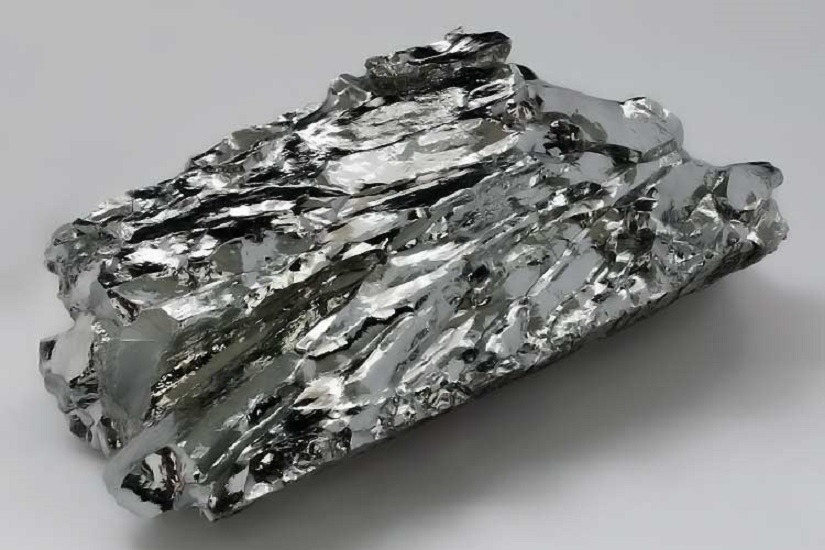7 Interesting Facts about Molybdenum

7 Interesting Facts about Molybdenum
Molybdenum is a silver-white metal with the element symbol Mo and atomic number 42. Molybdenum has a density of 10.2g / cm³, a melting point of 2610 ° C, and a boiling point of 5560 ° C. Beyond the basics above, what else should we know about molybdenum? In this article, we'll introduce 7 interesting facts about molybdenum.

Interesting Facts About Molybdenum
Interesting Facts about Molybdenum - 1. How was molybdenum found?
In 1778, Swedish chemist Carl Wilhelm Scheele discovered that nitric acid did not react with graphite, but reacted with molybdenite to obtain a white powder, which was boiled together with an alkaline solution to crystallize out a salt.
He believes that this white powder is a metal oxide, which is mixed with charcoal and heated, and no metal is obtained. When it is heated together with sulfur, the original molybdenite is obtained, so he believes that the molybdenite should be a mineral of unknown elements.
Inspired by Scheele, in 1781, Swede P. J. Hjelm used the "carbon reduction method" to separate a new metal from this white powder and named the metal "Molybdenum".
Interesting Facts about Molybdenum - 2. The Reserves of Molybdenum Resources
The average content of molybdenum in the earth's crust is about 0.00011%. There are about 20 types of molybdenum ore discovered, of which molybdenite is the most industrially valuable, followed by tungsten-phase calcium ore, color molybdenum-lead ore, and platinum-copper ore.

Molybdenum Ore
According to data released by the US Geological Survey in 2015, the global reserves of molybdenum resources are about 11 million tons and the proven reserves are about 19.4 million tons.
Interesting Facts about Molybdenum - 3. The Country Distribution of Molybdenum Resources
According to data released by the United States Geological Survey in 2015, China is the country with the most abundant molybdenum resources in the world, with reserves of 4.3 million tons, followed by the United States (2.7 million tons) and Chile (1.8 million tons) ). The reserves of molybdenum resources in the three countries account for about 80% of the world's total reserves.
The countries with rich molybdenum resources are also Peru (450,000 tons), Canada (260,000 tons), Russia (250,000 tons), Australia (200,000 tons), Mongolia (160,000 tons), Armenia (150,000 tons), Mexico (130,000 tons), Kazakhstan (130,000 tons), Kyrgyzstan (100,000 tons), Turkey (100,000 tons), Uzbekistan (60,000 tons) and Iran (50,000 tons).
Interesting Facts about Molybdenum - 4. Global Molybdenum Production
According to data released by the United States Geological Survey in 2015, global molybdenum ore output was 266,000 tons in 2014, up 3% from 258,000 tons in 2013.
China is the largest producer of molybdenum ore. In 2014, molybdenum production was 100,000 tons, accounting for about 38% of the global total. In 2014, US molybdenum mine output was 65,500 tons, ranking second, while Chile (39,000 tons) and Peru (18,100 tons) ranked third and fourth, respectively.
In addition, other major producers of molybdenum mines in the world include Mexico (11,000 tons), Canada (0.95 million tons), Armenia (0.67 million tons), Iran (0.63 million tons), Russia (0.48 million tons), Turkey (0.28 million tons) ), Mongolia (20 thousand tons) and Uzbekistan (0.055 tons).
Interesting Facts about Molybdenum - 5. The Application of Molybdenum Resources
The application of molybdenum in the steel industry ranks first, accounting for about 80% of the total consumption of molybdenum, followed by the chemical industry, which accounts for about 10%.
In addition, molybdenum is also used in electrical and electronic technology, medicine, and agriculture, accounting for about 10% of total consumption.
Interesting Facts about Molybdenum - 6. The Reuse of Molybdenum
With the continuous development of the molybdenum industry, the consumption of molybdenum raw materials is increasing and the exploitable resources are decreasing.
In order to protect the environment and improve the utilization rate of molybdenum resources, since the mid-1980s, developed countries have begun to pay attention to the value of molybdenum-containing waste catalysts.
For example, the United States recovered 3800 tons of molybdenum from spent catalysts in 1995, accounting for about 30% of the total molybdenum supply.
Interesting Facts about Molybdenum - 7. The Effects of Molybdenum on Human Health
Molybdenum is one of the trace elements necessary for the human body and has a great impact on human health. The main health effects of molybdenum are:
I. Molybdenum is an indispensable trace element in the formation of uric acid.
II. Molybdenum is an important component of various enzymes. It is involved in the use of iron in the body, which can prevent anemia, promote development, and help the metabolism of carbohydrates and fats.
III. Molybdenum maintains myocardial energy metabolism and prevents Keshan disease.
IV. Molybdenum maintains the elasticity of arteries and prevents cardiovascular diseases.
V. Molybdenum element can maintain human immune function.
VI. Molybdenum can regulate the thyroid.
VII. Molybdenum can prevent caries, kidney stones, and cancer, etc.
VIII. Molybdenum is an important component of the iris of the eye.
Conclusion
Thank you for reading our articles, and we hope it can help you have a better understanding of molybdenum. If you want to know more about the interesting facts about molybdenum and other refractory metals, you can visit Advanced Refractory Metals (ARM) for more information.
Headquartered in Lake Forest, California, USA, ARM is a leading manufacturer & supplier of refractory metals across the world. We offer our customers high-quality refractory metal products such as tungsten, molybdenum, tantalum, rhenium, titanium, and zirconium at a very affordable price.
{{item.content}}
LEVE A REPLY
{{item.children[0].content}}
{{item.content}}






